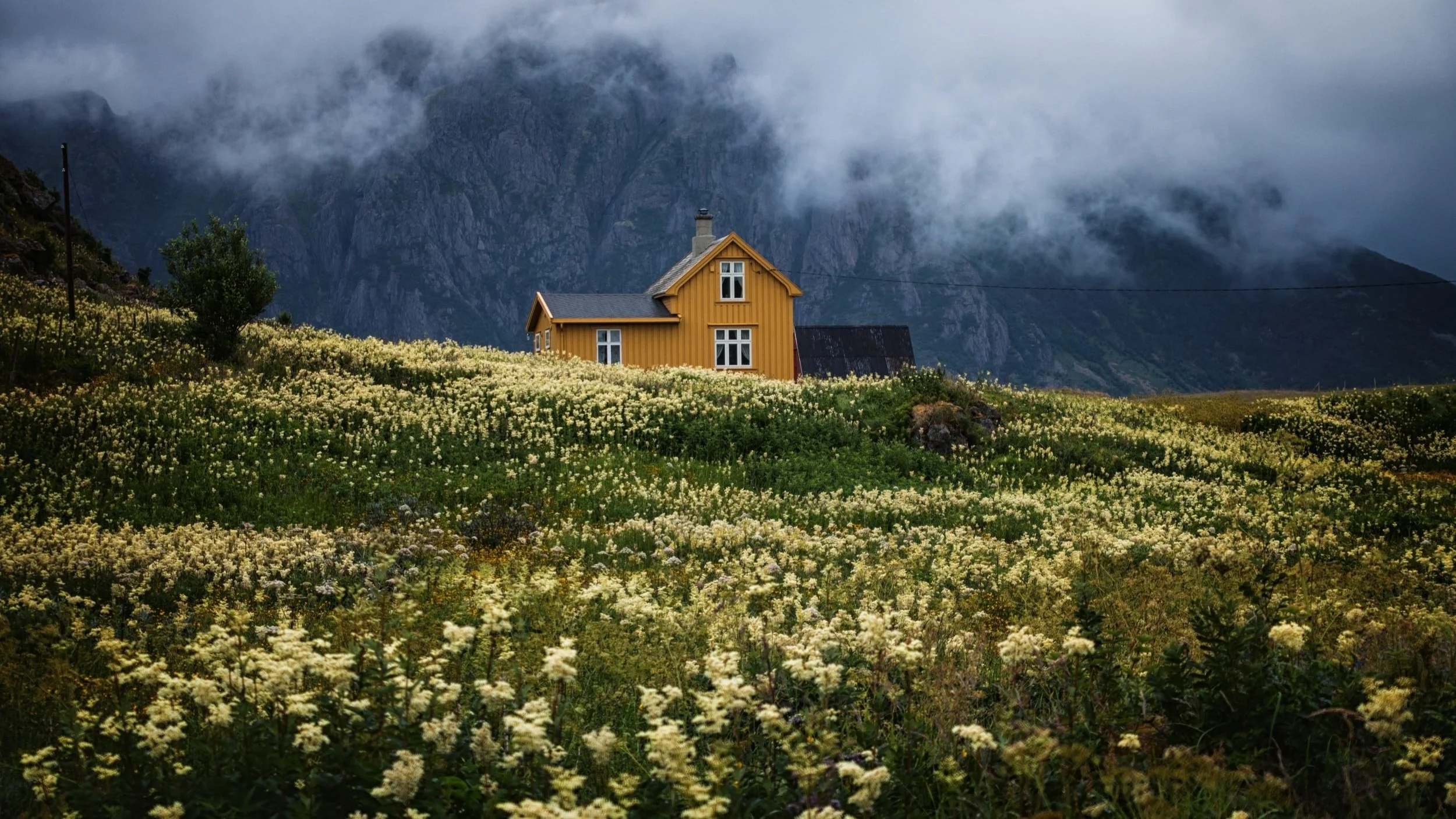How To Properly Site Your Dream Home
Properly Siting Your Dream Home Is a Delicate Process and Once It’s Done, It’s Done. Get It Right the First Time or Regret It for Generations
When planning a new home, figuring out where to site it on your property, and how to best orient it, may be the most important decision you can make. Part art and part science, there’s much more to this than one might think.
A Story
There’s a story of a couple who purchased beautiful hillside acreage on which to build their dream home. They spent over a year visiting the land, camping out, and picnicking. One particular spot came to become their favorite, for its vistas, daytime shade, protection from the wind, and beautiful sunsets. Over time, they decided that this is where they would build their home, right on the spot that had created so many memories for them.
As it turns out, this was to be a heartbreaking, expensive, and indelible mistake. After instructing their builder to put the home exactly where they had enjoyed countless picnics, they were surprised and saddened to realize that after years of planning, design, and construction, not to mention the commitment of a great portion of their life savings, they had accidentally diminished their treasured spot by building their home right on top of it.
False Assumptions
In my 30 plus years of practice, I’ve come across this false assumption many times and have helped to coach many a client to a better, more nuanced solution. To the untrained, and uninitiated, putting your dream home right on top of your dream spot makes all the sense in the world. However, architecture and the experiences that it can engender, are both more subtle and complex than that.
Place making and space making, especially on sites with significant acreage, is a very delicate art, one best left to a professional with both the talent and experience to uncover solutions that enhance and uplift the inherent properties of your land, as opposed to inadvertently diminishing them through simplistic assumptions.
Architects are trained from day one to think of buildings not as objects but as place and space making elements, part of a set of tools in a larger compositional toolbox, tools that we use to shape both indoor and outdoor experiences for the better. The best architects, in fact, think of landscaping elements and architectural elements as almost interchangeable. This is to say that both help to shape spaces and make places.
For more on how the site shapes the home design, watch this video and see how we explore the site’s landscape as we begin work on the initial architectural plan for our Marin County home design project.
Place Making
Building walls and site walls can both contain space and inform one’s procession through either a building or landscape. Trees and structural columns can do the same. Level changes, be they interior or exterior, impact how we moves through buildings and landscapes. They help to set the pace of our movement, encouraging us to slow down, pause, and turn at just the right moments. These elements impact how a series of spaces might be experienced over time, both in relationship to one another, and to greater, more distant spaces beyond.
In order to take full advantage of the land on which you decide to build, you really need to consider your home not just as an object that contains all of the rooms you want, sitting on your favorite spot of land, but as part of a holistic composition of elements that you will move in, through, and around. Of course, many of these “elements” (bathrooms, kitchens, etc.) can be quite functional in nature, but they also impact our overall experience and must be considered just as paint on a canvas might.
When we take on a design project, we begin by thinking in very abstract terms, making site diagrams, building simple models, and of course analyzing that which we can see and know. Through an iterative process we explore what should be indoor space and what should be outdoor space, balancing the two so that the ultimate solution creates a seamless indoor/outdoor, spatial experience.
We often think of outdoor spaces as rooms, taking special care to scale them properly for their intended use, creating appropriate relationships with adjacent indoor and outdoor spaces, and carefully choosing how sun, views, wind, and other environmental considerations will influence the character of a space.
Now imagine taking on this level of consideration for ever space associated with your entire project: indoor, outdoor, and in between. Orchestrating a beautiful, uplifting, and eye opening whole out of the respective parts: kitchen, living room, dining room, den, bedrooms, bathrooms, patios, decks, courtyards, pool areas, etc. - this is architecture. Done right, this whole is far greater than the sum of its parts.
So especially if you have land that speaks to you, land that you adore, hiring a qualified architect with the depth of experience and intuitive insight to orchestrate such an environment, is paramount. Finding a house plan that you like and having a builder put it on a piece of land is almost always an enormous missed opportunity, beyond what most people can even imagine. But this isn’t your fault.
In the Presence of Architecture
If you or someone you know has made this mistake, no one is to blame. We in American simply haven’t been exposed, educated, or initiated into thinking and seeing in these ways. We might visit Europe or Japan and wonder, “What is that ineffable quality of place that we experience which is so hard to put a name to?” “Why are the piazzas so lovely and the villages so endearing?” “Why does that Japanese temple with its austere rock garden feel so peaceful?” The answer is simple: You’re in the presence of architecture and truth be told, we simply don’t get enough of it here in the US. And because we haven’t been exposed to it, we don’t know what we’re missing, nor how to ask for it.
Ready-Made Design
Compounding the problem of “asking for design” is the fact that we are a culture accustomed to purchasing readymade products. These products have already been designed for us. The cost of that design effort is “baked into” the cost of the product. This being the case, we aren’t accustomed to explicitly paying for design as a service. Neither do we have to sit through the discomfort of not knowing whether design option A or B is best. We’re simply offered whichever option Apple, Charles and Ray Eames, Miele, or Tesla has decided is best for us. This is easy and convenient and while it can expose us to good design, it doesn’t prepare us for the experience of going through the process of design alongside a trusted guide.
This is where a skilled architect comes in. The right architect acts not only as your Jonny Ives (Apple’s former VP of Design) but also as your design coach and your shepherd, bringing you through the design journey.
Like Making a Movie
To use another analogy, the right architect acts as both the screenwriter and director of the movie that will be the design and construction of your home, with you as the producer. Like launching the production of a new film, designing and building your dream home can be an incredibly exciting experience and process, one that can pay dividends for you, your family, and even your heirs for generations to come.
It can, however, also be a costly and stressful experience, especially if you and your project aren't being held with the utmost care. An architect has a responsibility to help you scale and tune your project to your wants, needs, budget, and schedule, while at the same time helping you to see possibilities that you never imagined. It’s this balance, left brain and right brain, art and science, that make the right architect an invaluable resource when planning your dream house.
Eschewing Instant Gratification
In a world of instant gratification and throwaway products, we here at Parco Studio believe that to co-creating beauty and relative permanence in the form of architectural projects, is something the world needs more of. As an architecture firm, it is both our passion and responsibility to deliver on all a thoughtfully- and beautifully-designed home can be.
If you’d like to join us on such a journey, please reach out. We would be happy to help.






